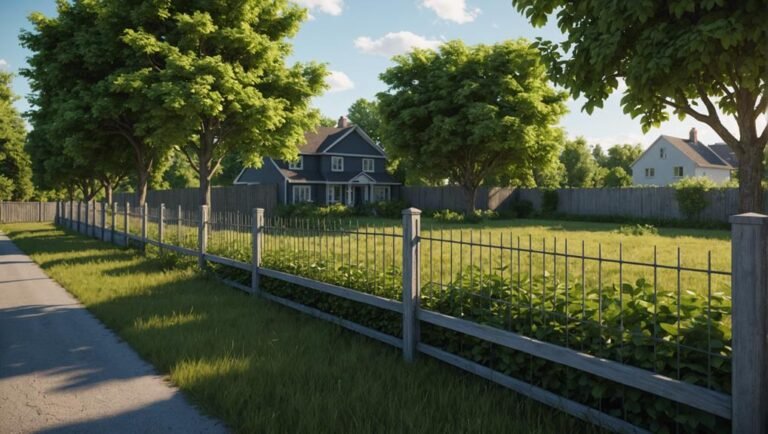Bungalow Definition: What Makes a House a Bungalow?
A bungalow is defined by its single-story layout, modest size, efficient design, and practical storage solutions. These features contribute to its unique architectural style, offering a cozy and inviting atmosphere. Historically, bungalows have evolved in style, incorporating modern amenities while preserving their historical elements. The architecture of a bungalow combines simplicity and functionality, with dormer windows and verandas adding character. Modern adaptations include open floor plans, smart home technology, and sustainable materials, blending traditional charm with contemporary aesthetics. The bungalow's versatility caters to a range of needs, making it a popular choice for homeowners.
Key Takeaways
- Single-story layout distinguishes bungalows.
- Low-pitched roofs are a characteristic feature.
- Cozy and inviting atmosphere defines bungalows.
- Architectural detail adds charm and appeal.
- Practicality and efficient use of space are key.
Characteristics of Bungalows
Bungalows, renowned for their single-story design and modest square footage, embody a classic architectural style that prioritizes simplicity and functionality. The interior of a bungalow often reflects a cozy and efficient layout, with open floor plans and minimalistic designs to maximize space utilization. Bungalow interiors typically feature built-in furniture, natural lighting, and practical storage solutions to enhance livability.
Regarding landscaping, bungalows are often surrounded by well-maintained gardens, reflecting the simplicity and charm of the architectural style. Landscaping around bungalows may include lush greenery, flower beds, and pathways that blend seamlessly with the natural surroundings. Overall, both the interior design and landscaping of bungalows contribute to a harmonious and comfortable living environment.
Key Features of Bungalows
With a focus on architectural detail and functional design, bungalows exhibit distinctive features that have contributed to their enduring popularity in the domain of residential housing. Bungalow design often includes a single-story layout, low-pitched roofs, and a horizontal orientation that blends seamlessly with nature. These houses are known for their cozy and inviting atmosphere, making the bungalow lifestyle appealing to many homeowners seeking simplicity and comfort.
Verandas, dormer windows, and open floor plans are common elements found in bungalow design, enhancing both aesthetic appeal and functionality. The practicality and charm of bungalows have stood the test of time, offering a unique living experience that continues to attract individuals looking for a harmonious blend of form and function in their homes.
Historical Evolution of Bungalows
The historical evolution of bungalows traces back to their origins in the South Asian region of Bengal, where these dwellings underwent a transformation from large residences to compact one-story houses that eventually gained widespread popularity for their affordability and practical design. Bungalows have evolved over time with regards to styles and interior design, reflecting the changing needs and tastes of homeowners.
- Evolution of bungalow styles: Bungalows have seen variations in architectural styles, such as California, Chicago, and chalet.
- Adaptation of interior design: Interior layouts and decorations in bungalows have adapted to modern trends while maintaining the cozy and functional aspects.
- Incorporation of modern amenities: Bungalows have been updated to include modern amenities without compromising their traditional charm.
- Efforts towards sustainability: Many bungalows are now designed with sustainability in mind, incorporating eco-friendly features.
- Preservation of historical elements: Efforts are made to preserve the historical architectural elements of bungalows while incorporating contemporary design elements.
Understanding Bungalow Architecture
Having originated in the South Asian region of Bengal, bungalow architecture showcases a distinctive blend of simplicity, functionality, and historical significance. Bungalow design emphasizes a single-story layout, often with a half story or loft, incorporating dormer windows and verandas for added charm. The interior of a bungalow typically features an open floor plan, cozy nooks, and efficient use of space. Bungalows are known for their cost-efficiency in heating and cooling, offering more privacy due to their lower position. The design allows for easy modifications and additions, making them versatile for various needs. Despite higher initial costs, bungalows remain popular for their timeless appeal and practicality.
| Bungalow Design | Bungalow Interior |
|---|---|
| Single-story layout | Open floor plan |
| Dormer windows | Cozy nooks |
| Verandas | Efficient use of space |
Modern Adaptations of Bungalows
In the domain of architectural evolution, contemporary adaptations of bungalows reflect a fusion of traditional charm with modern functionality and design trends. Bungalow renovation trends and interior design have evolved to cater to the changing needs and preferences of homeowners.
Some key aspects to ponder in modern adaptations of bungalows are:
- Incorporation of open floor plans for a spacious feel.
- Integration of smart home technology for convenience.
- Emphasis on sustainable materials and energy-efficient designs.
- Blending traditional bungalow features with modern aesthetics.
- Customization of bungalow interiors to reflect individual styles and preferences.
These trends showcase how bungalows have adapted to meet the demands of modern living while preserving their historical significance and appeal.
Conclusion
To sum up, the bungalow stands as a tribute to the enduring appeal of practicality and simplicity in residential design. Its historical evolution and key features have solidified its place as an architectural icon.
As we explore further into the essence of bungalows, we are left to ponder: How has the bungalow managed to maintain its relevance and charm throughout the ever-changing landscape of housing design?







